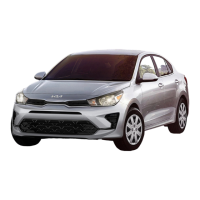7
6
6
Driving your vehicle Before driving
Before driving
Before entering vehicle
䳜 Be sure that all windows, outside
mirror(s), and outside lights are
clean.
䳜 Check the condition of the tyres.
䳜 Check under the vehicle for any
sign of leaks.
䳜 Be sure there are no obstacles
behind you if you intend to back
up.
Necessary inspections
Fluid levels, such as engine oil,
engine coolant, brake fluid, and
washer fluid should be checked on a
regular basis, with the exact interval
depending on the fluid. Further
details are provided in "Mainte
-
nance" on page 8-5.
Driving whilst distracted can result
in a loss of vehicle control, that may
lead to an accident, severe personal
injury, or death. The driver's pri
-
mary responsibility is in the safe
and legal operation of a vehicle. Any
use of handheld devices, other
equipment, or vehicle systems that
take the driver's eyes, attention,
and focus away from the safe oper
-
ation of a vehicle are not permissible
by law. These should never be used
during the operation of the vehicle.
Before starting
䳜 Close and lock all doors.
䳜 Position the seat so that all con
-
trols are easily reached.
䳜 Adjust the inside and outside
rearview mirrors.
䳜 Be sure that all lights work.
䳜 Check all gauges.
䳜 Check the operation of warning
lights when the ignition switch is
turned to the ON position.
䳜 Release the parking brake and
make sure the brake warning light
goes out.
For safe operation, be sure you are
familiar with your vehicle and its
equipment.
All passengers must be properly
belted whenever the vehicle is mov
-
ing. Refer to "Seat belts" on page 3-
15 for more information on their
proper use.
Always check the surrounding areas
near your vehicle for people, espe
-
cially children, before putting a car
into D (Drive) or R (Reverse).

